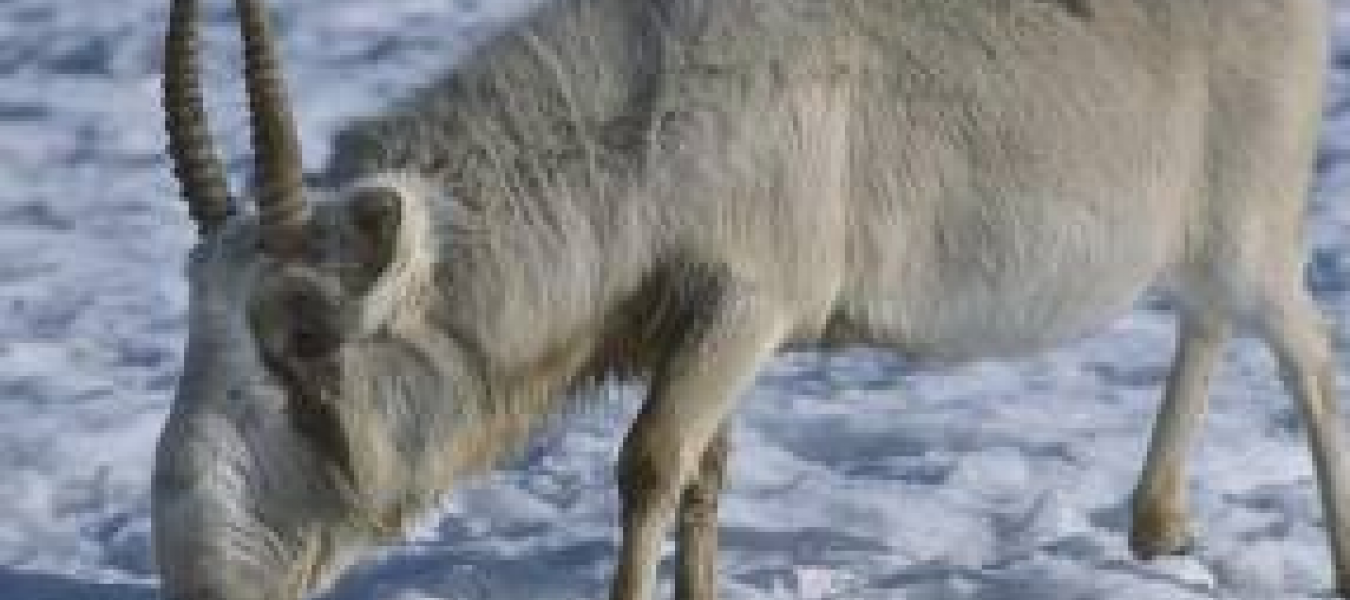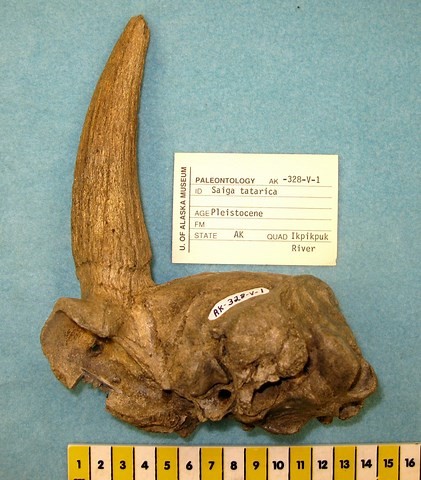
Evolution of the diet and habitat of the saiga antelope over the late Quaternary using stable carbon and nitrogen isotope ratios
Jürgensen, J., D.G. Drucker, A.J. Stuart, M. Schneider, B. Buuveibaatar, H. Bocherens. 2017. Quaternary Science Reviews.160: 150-161.
The saiga antelope (Saiga tatarica) is one of the typical late Pleistocene species of the cold and arid mammoth steppe that covered a large area of northern hemisphere. The species is currently endangered and persists only in small areas of the Central Asian steppe and desert ecosystems.
To examine how different their diet and habitat were from those observed nowadays, the research team compared the composition of carbon and nitrogen isotopes in the collagen from 76 fossilized and 52 recent bones and hairs of saiga antelopes. The survey results suggest the modern saiga is occupying just one of the diverse habitats they used in the past. Therefore, the extant saiga is not a refugee species confined to a suboptimal habitat.
During the late Pleistocene, the saiga occupied a separate niche compared with the other ungulates of the mammoth steppe. However, this species could also adapt to a lichen-dominated diet normally seen in reindeer, leading to an isotopic overlap between saigas and reindeer in south-western France and Alaska around the Last Glacial Maximum. This adaptation allowed a geographical expansion that does not correspond to a habitat-tracking episode. Hence, the realized niche currently observed for the saiga is reduced compared with their potential capacity for adaptation, a crucially important factor for the conservation of this endangered species.

Skull of Pleistocene Saiga, https://phys.org/news/2017-03-saiga-antelopes-flexible-thought.html#jCp
